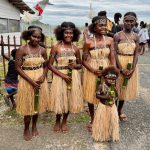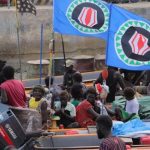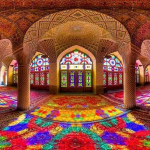I’ve been working with Young Pioneer Tours (YPT) since my first visit to North Korea back in May 2012, so when I became the first Western tourist to re-enter the country via the Rason Special Economic Zone on February 13th, 2025, it was an especially meaningful moment for me. Sadly, the country’s borders soon closed again, making North Korea the only nation in the world still sealed off since the pandemic.
Through YPT’s involvement as official agents for the 18th Pyongyang International Film Festival 2025, representing and facilitating film submissions from around the world, my business partner Justin Martell and I were granted rare access to the capital. This marked my first return to Pyongyang since January 11th, 2020, ironically, I was among the very last Western tourists to visit before the COVID-19 closure.
Having now visited North Korea over 100 times, I noticed several fascinating changes and developments during this October 2025 visit. Here are my five key takeaways from the trip.
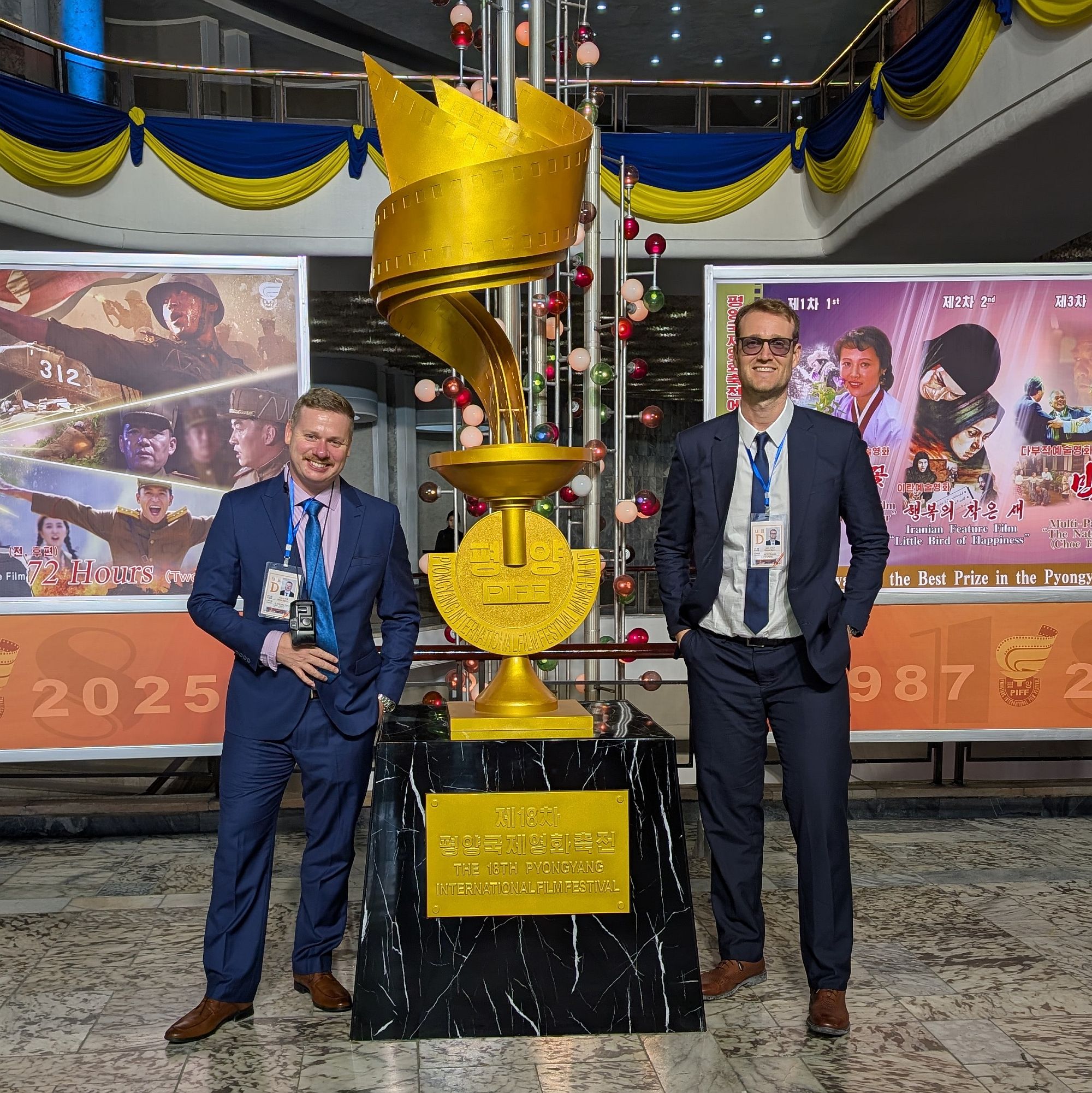
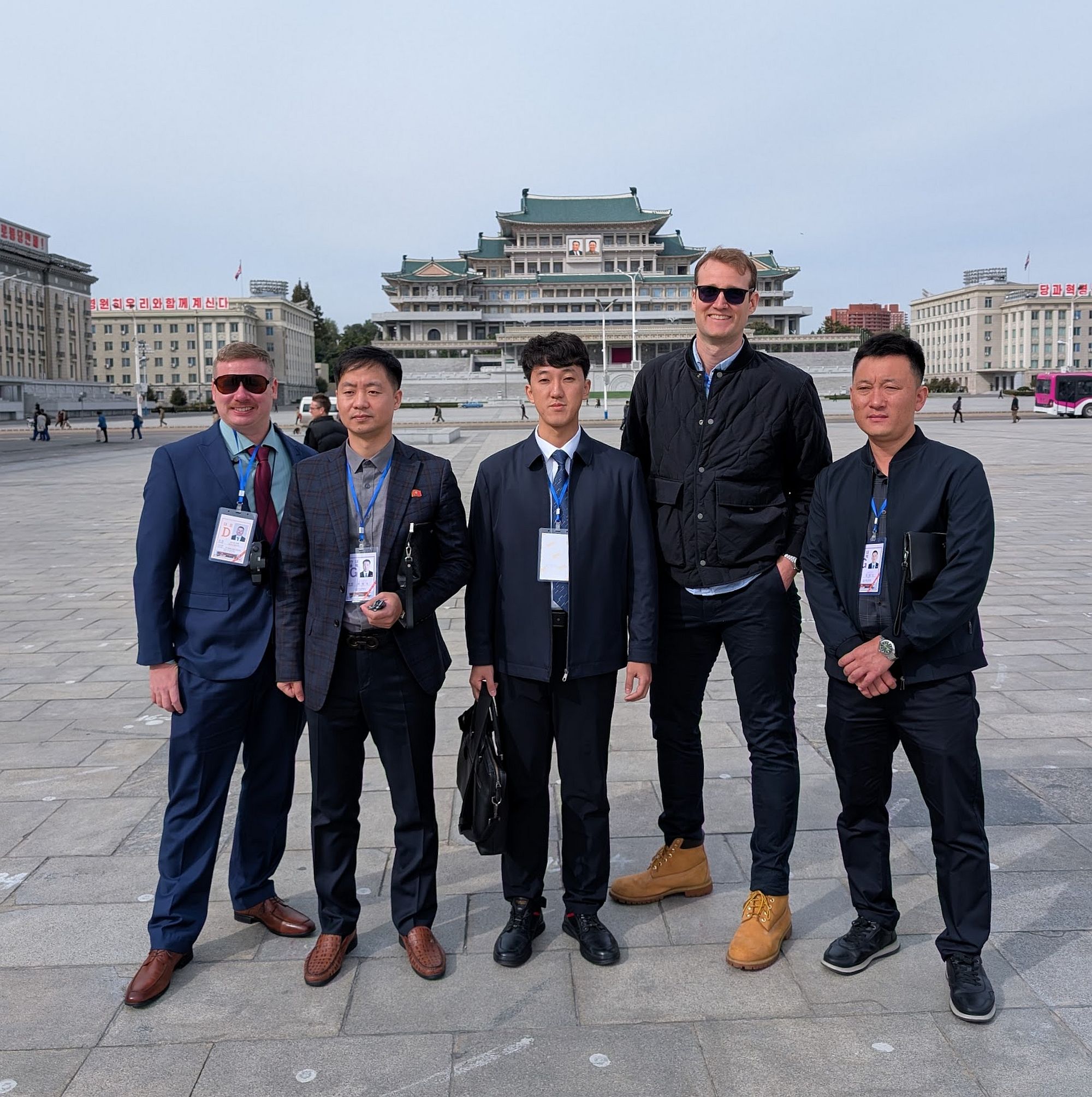
Table of Contents
1. Return to Pyongyang: A Rare Glimpse Post-Pandemic
We’re effectively living through what could be described as a “Cold War 2.0.” This new geopolitical landscape has heavily influenced Pyongyang’s stance on tourism. Currently, only Russian visitors are permitted into the country, while all other nationalities, including Chinese, remain excluded.
Upon my arrival on an Air Koryo Tupolev-204 flight, I found that the immigration and customs process remains largely unchanged. Immigration was quick and cordial, but customs, as always, depends on how you handle the officers and their inspection routine.
Our group boarded a retro Japanese bus I recognised from previous VIP delegations, and as we drove into the city, I immediately noticed something very welcoming: the entire road from Pyongyang International Airport to the city had been newly repaved. A few minutes later, we passed through Hwasong District, Pyongyang’s newest grand development, a striking modern addition that I’ll discuss later in this post.
Checking into the Yanggakdo International Hotel, I was pleasantly surprised by its condition. Since the renovations completed in 2019, the hotel has been kept in excellent shape. Even more heartwarming was seeing familiar faces among the staff, many of whom I’ve known for years, greeting me with open arms and long handshakes. It was one of those rare, genuine moments where you realise how much time has passed, and how much has changed, yet how some connections endure.
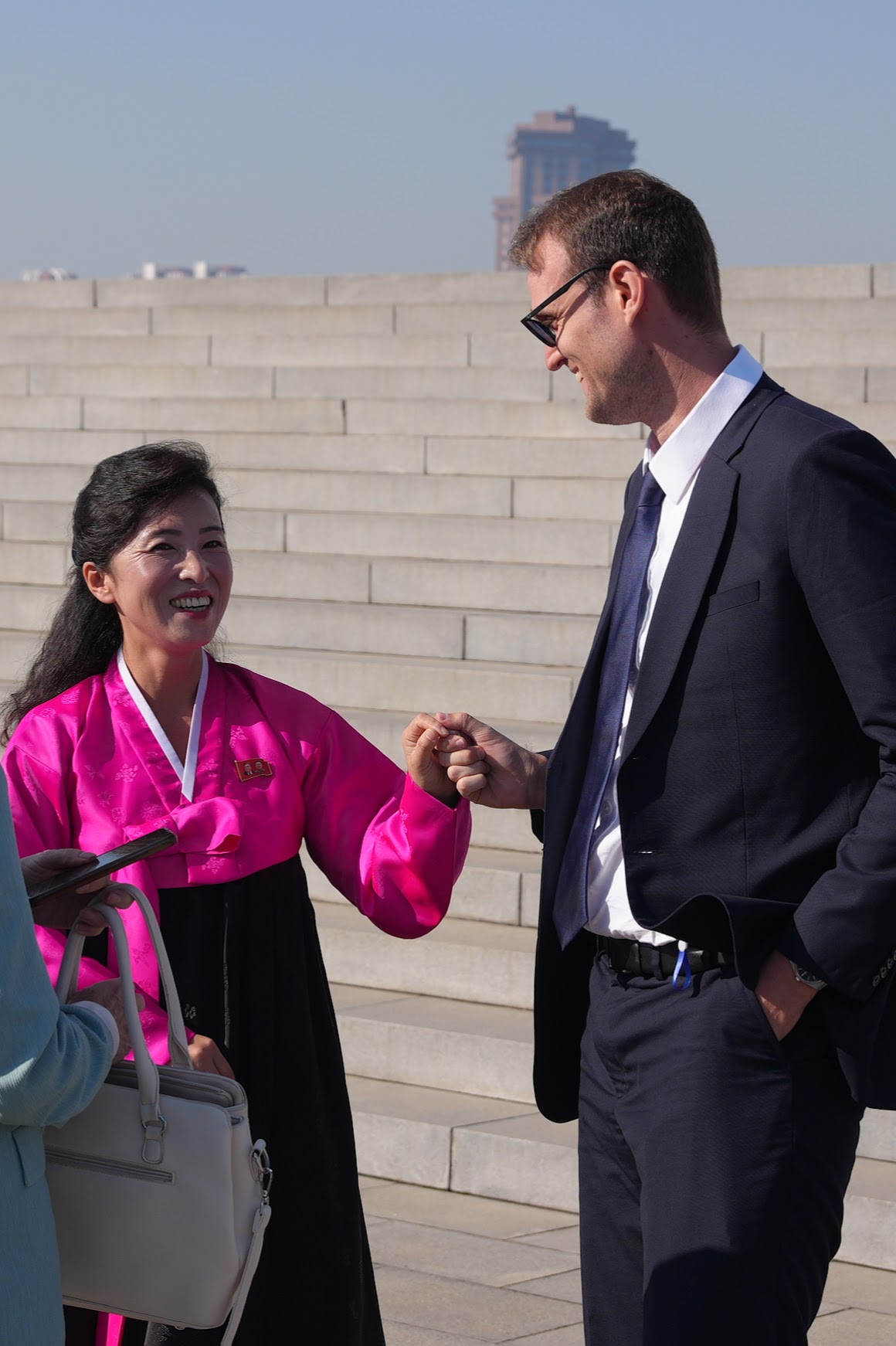
Another thing that stood out was how smooth and freshly paved the roads were across much of Pyongyang, a level of urban renewal not seen since the opening of Reunification Street (now Rangnang Street) back in 1992.
Around 2017, the Marshal ordered Pyongyang’s famous traffic girls off the streets, citing concerns about working conditions. To my surprise, they’re now back in full force, proudly stationed at nearly every major intersection. Once considered more ceremonial than necessary, they now play a vital role, private car ownership has skyrocketed, and traffic congestion is a genuine challenge. What used to be a five-minute drive across the city can now take 30 to 45 minutes, something that will definitely factor into future YPT itineraries once tourism resumes.
Despite visiting at the end of October, when power shortages typically begin due to higher electricity demand, I experienced no power cuts whatsoever, even with new urban developments like Hwasong and Songhwa Districts increasing demand on the grid.
Pyongyang has evolved into a modern, dynamic city.. more so than I ever anticipated, especially considering the years of isolation and the weight of ongoing sanctions.
2. The Pyongyang International Film Festival 2025
The 18th Pyongyang International Film Festival (PIFF) was the first to be held since 2019, and as someone who has attended previous editions, I wasn’t quite sure what to expect this time. Given North Korea’s extended isolation, it was remarkable that the festival went ahead at all, and even more remarkable that Justin and I were among the small group of foreigners invited to attend.
Our delegation consisted of around 50 guests, mostly Chinese and Russians, with a handful of others representing countries from across the world. I was the sole Australian representative, while Justin, originally from the United States, attended under his St. Kitts and Nevis citizenship. The rest of our eclectic group included one Indian, two Greeks, one Italian, one Swiss, one Dane, and one Austrian.
In total, over 300 films were submitted to the festival, with around 100 selected for screening. The event was hosted primarily at the Yanggakdo International Cinema, where both the opening and closing ceremonies took place.
The opening ceremony was a spectacle in true DPRK fashion. Grand, theatrical, and immaculately choreographed. Proceedings began with an address by Vice Premier of the Workers’ Party of Korea, Kim Myong Hun, who officially opened the festival. What followed was a vibrant showcase of traditional Korean dance and song, enhanced by pyrotechnics, fog effects, synchronized lighting, and massive LED displays, a visual feast that rivaled any major film festival’s opening night.
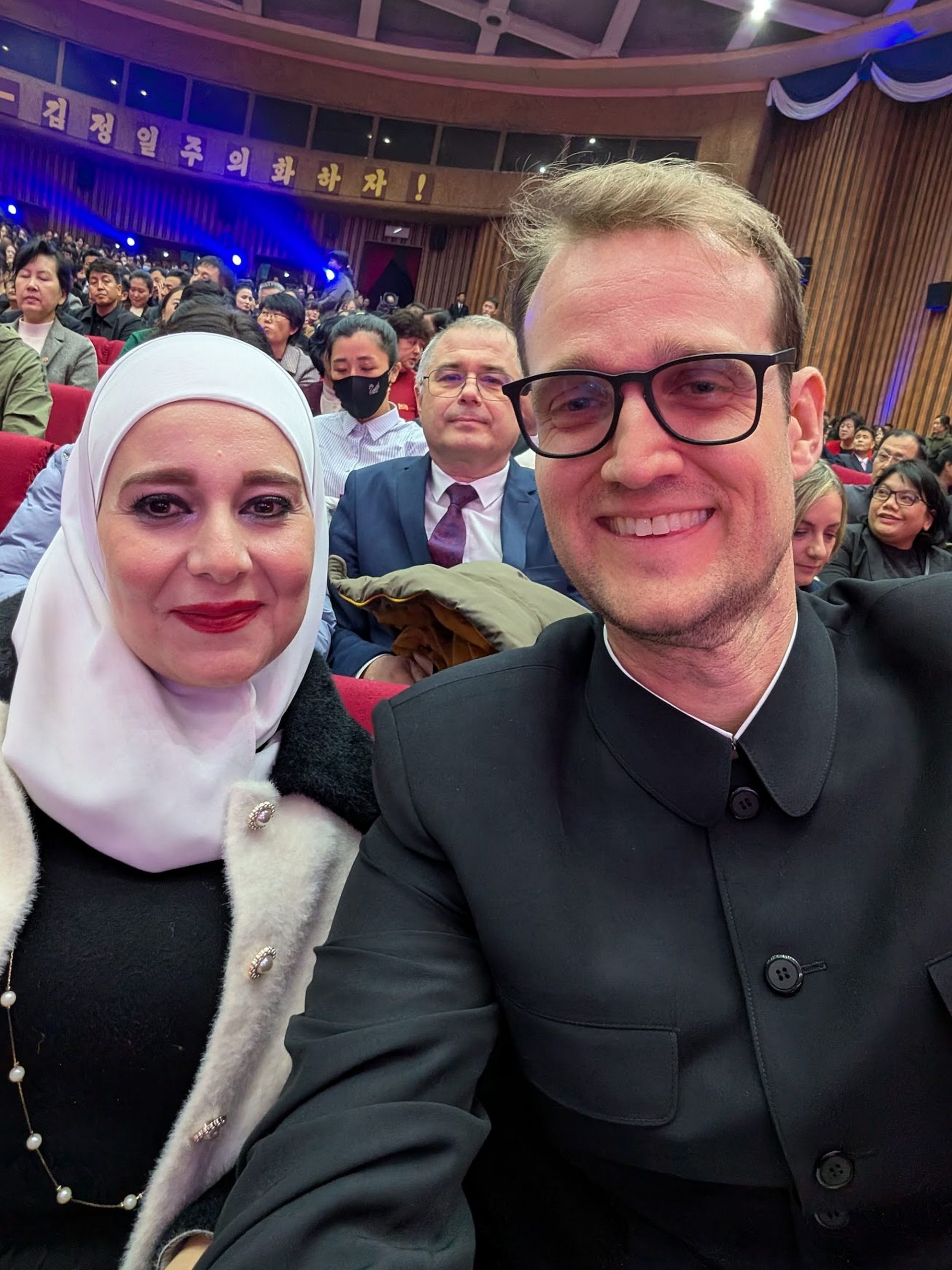
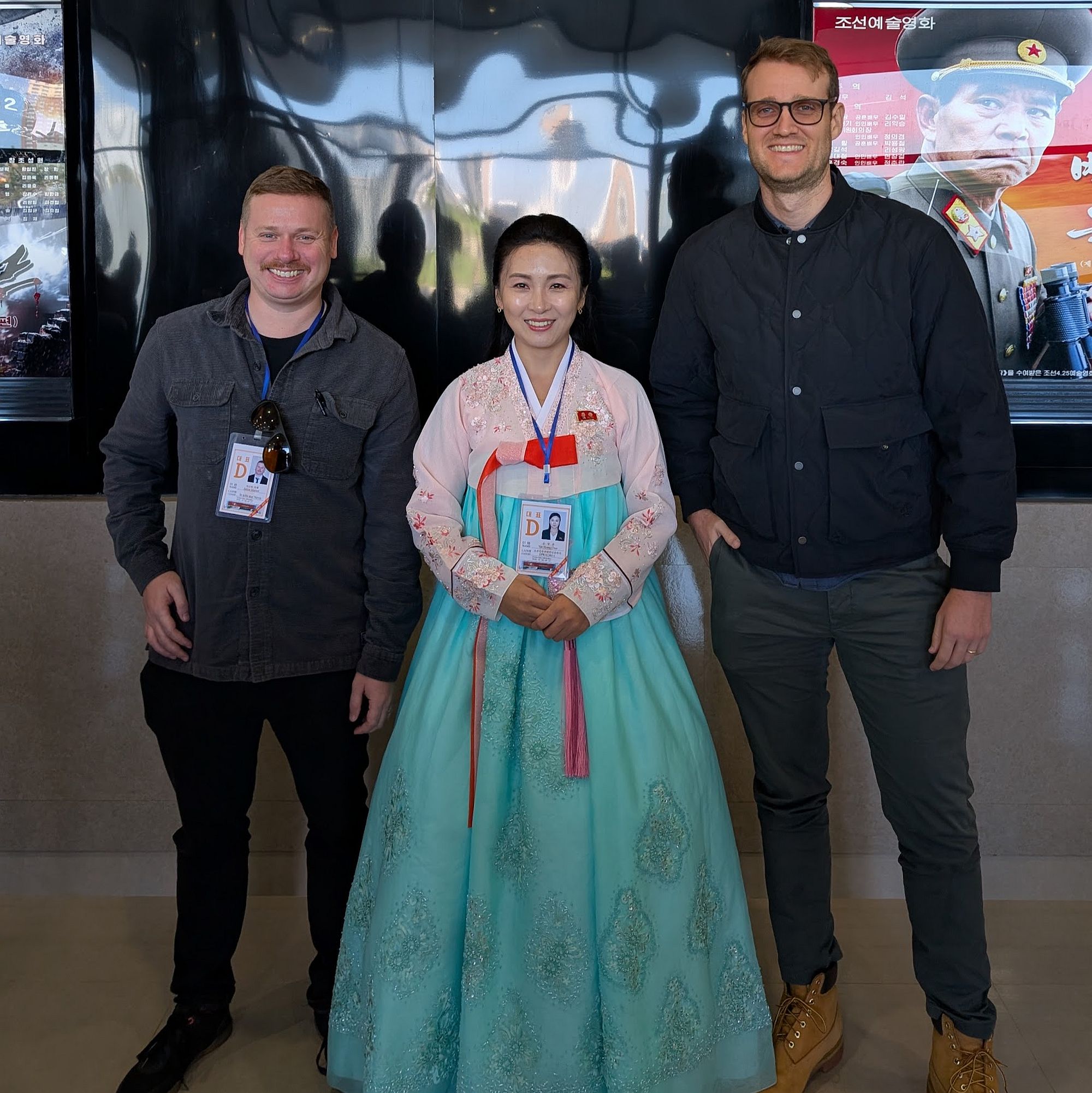
The audience was a fascinating mix of embassy diplomats, local officials, filmmakers, and foreign delegates. In front of me sat the Russian Embassy team, all of whom were fluent in English and eager to chat. To my left was the sole diplomat currently posted in Pyongyang from the Syrian Embassy, who has remained stationed there throughout Syria’s recent government transition. The atmosphere was unexpectedly warm and collegial, a rare environment for foreigners in North Korea to gather.
The opening film was Red Silk, a Russian-Chinese co-production, symbolizing the strong cultural ties between Pyongyang and its closest allies.
The following day, we were taken to a brand-new cinema complex in Pyongyang’s modern Hwasong District called the Junui (Vanguard) Cinema. The facility houses four state-of-the-art screening rooms equipped with modern projection, sound, and comfortable seating, rivalling any international cinema in developing countries.
Here, we attended the premiere of a new DPRK-produced feature film titled A Day and Night of Confrontation. It turned out to be one of the most surprising North Korean films I’ve ever seen. Unlike the typically restrained storytelling of previous DPRK productions, this film featured intense action sequences, psychological tension, and even scenes depicting murder and suffocation. Elements I never expected to witness in a North Korean cinematic release.
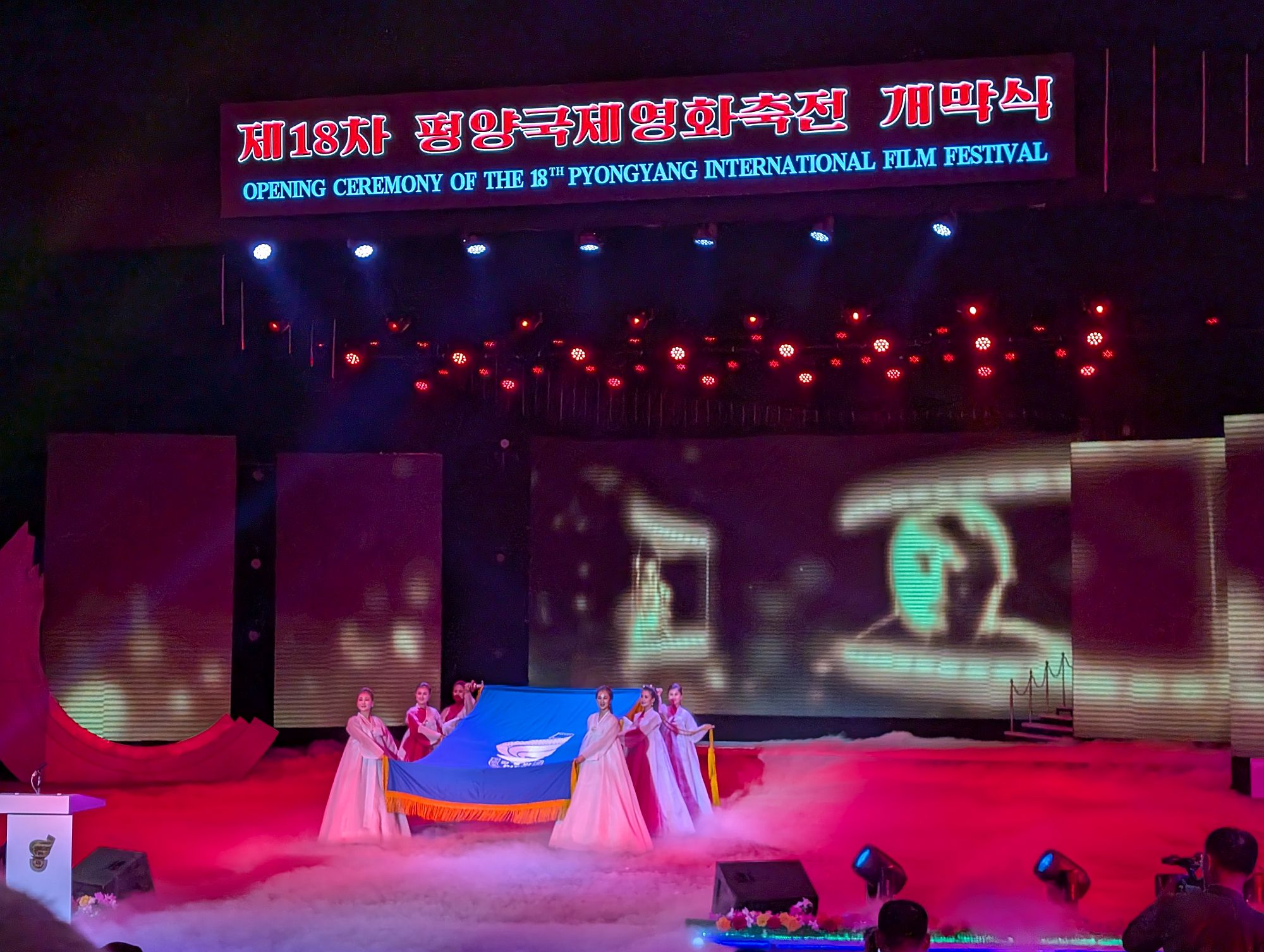
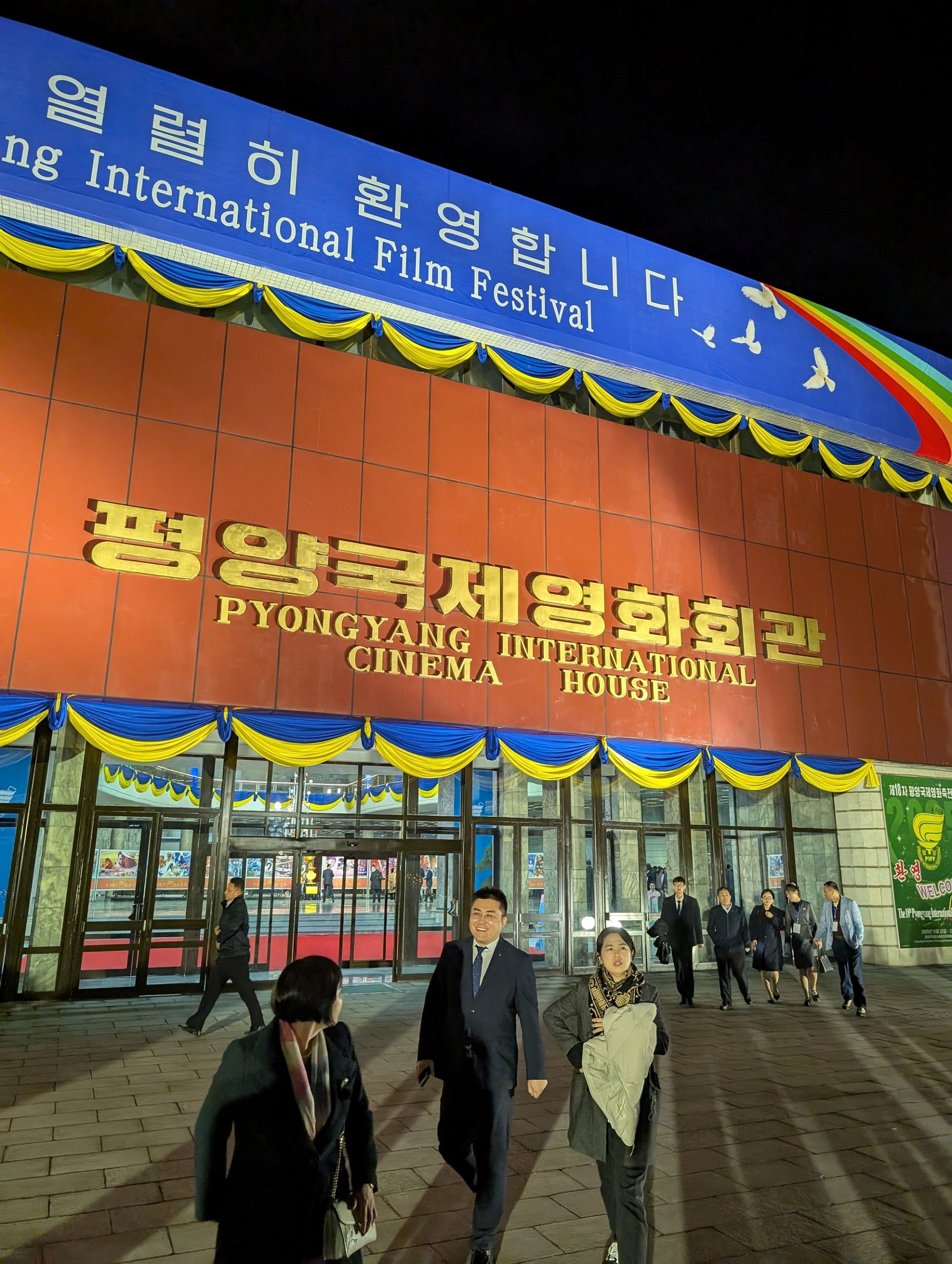
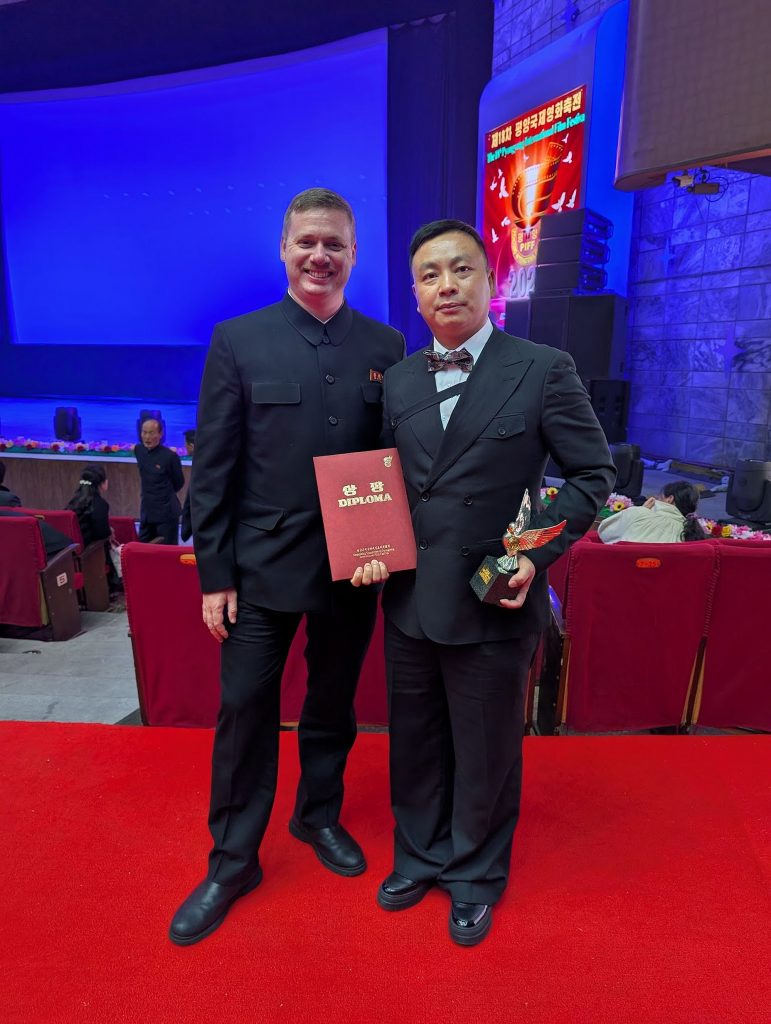
The plot centered around a traitorous plot to assassinate the North Korean leadership, inspired by real events, which the film’s introduction openly acknowledged. Despite its heavy themes, I found the movie thoroughly engaging, one of my favourite North Korean films to date for its production quality, pacing, and willingness to break convention.
The Pyongyang International Film Festival is now set to return in 2026, marking a significant step in the country’s slow cultural reopening. For filmmakers worldwide, it presents a rare opportunity: to have your film screened to North Korean audiences, something few in the international film industry can claim. Contact us for details.
3. Exclusive Access to Mount Myohyang and the International Friendship Exhibition
One of the true highlights of my visit to North Korea was once again being part of a milestone moment for Western visitors, becoming the first Westerner to visit the Mount Myohyang region since the pandemic. Located roughly two hours north of Pyongyang along a quiet highway, this mountainous region has long been one of the country’s most beautiful and historically significant areas. Before the 2020 closure, Mount Myohyang was a popular destination on YPT itineraries, offering both natural beauty and a rare glimpse into the country’s international relationships through its most famous site – the International Friendship Exhibition.
The International Friendship Exhibition is an extraordinary complex built directly into the mountain itself. It houses tens of thousands of gifts presented to North Korea’s three leaders – President Kim Il Sung, General Kim Jong Il, and Marshal Kim Jong Un – by governments, organizations, and individuals from around the world. The collection is meant to symbolize the global respect and admiration for the DPRK’s leadership, and whether or not one accepts that interpretation, the sheer scale and presentation are undeniably impressive.
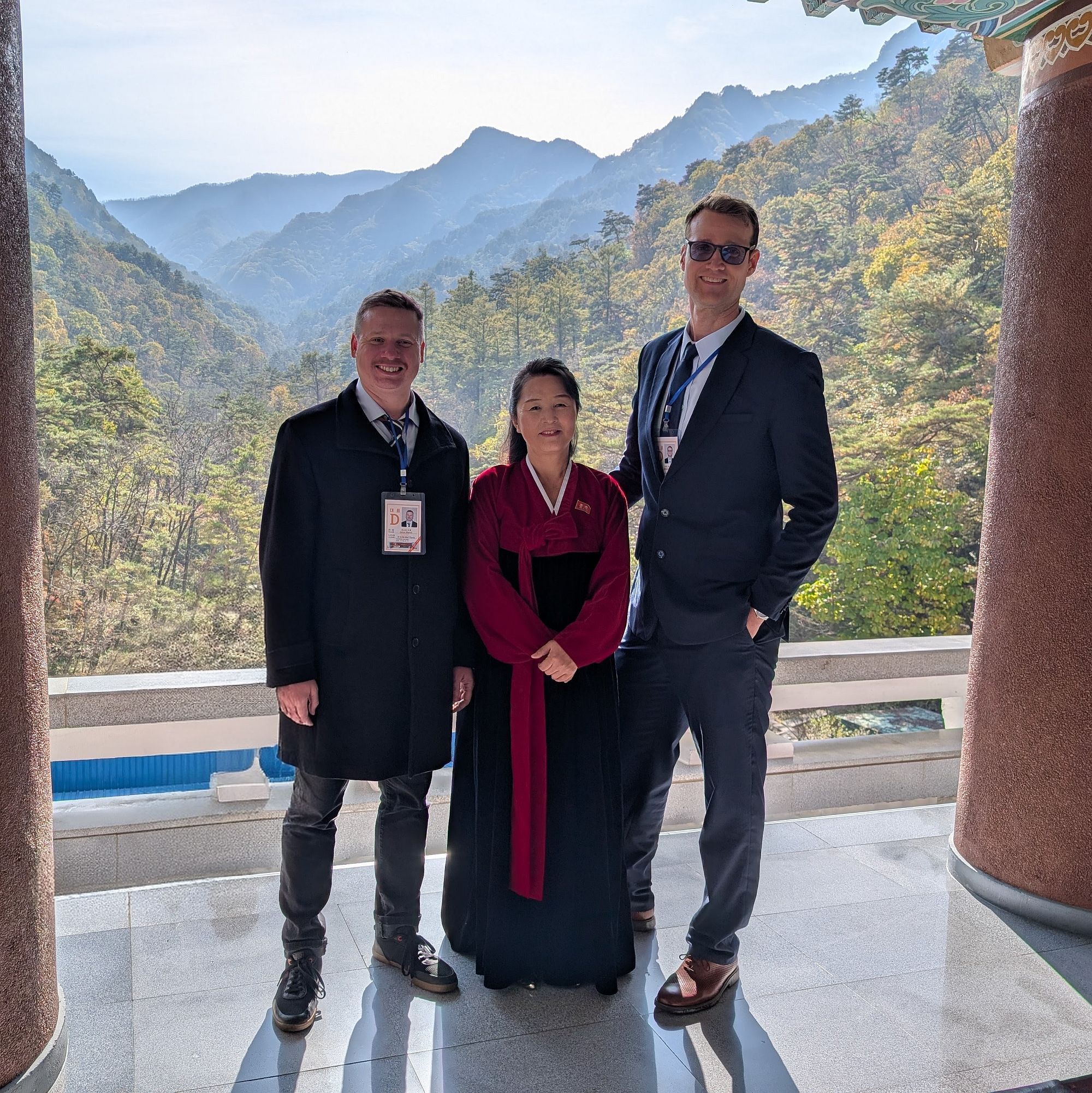
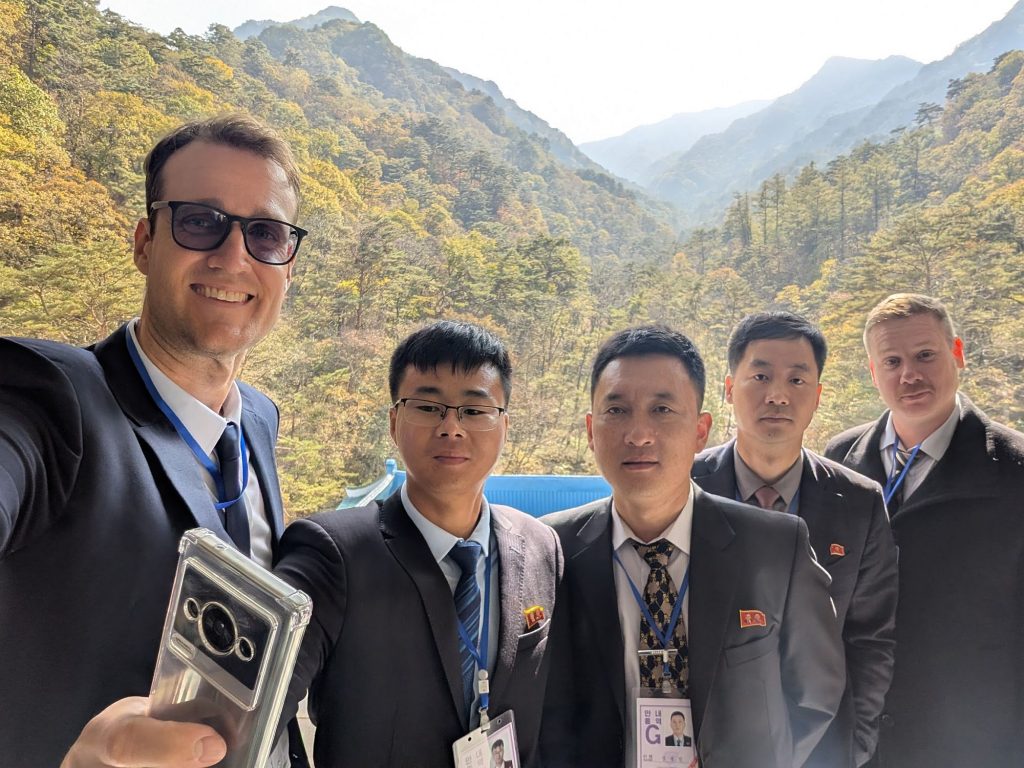
YPT has a small but proud place within this exhibition’s history. In 2013, to mark the 60th anniversary of the DPRK National Tourism Administration, YPT presented a gift to Marshal Kim Jong Un which remains on display to this day, prominently positioned on its own shelf. Because of that, the staff at the exhibition remembered me vividly from previous visits. When she recognized me, the same guide who had shown me around for many years, broke into a wide smile, welcoming me back with genuine warmth and introducing me to the other foreigners as a “VIP guest.” It was both surreal and touching to be remembered after so many years. A small but meaningful reminder of the long relationships built through cultural exchanges like these.
As our tour of the exhibition concluded, she turned to me with a bright smile and said, “I look forward to greeting your new tourists at Mount Myohyang.” It was a heartfelt moment that perfectly captured the sense of optimism by those directly affected by tourism too.
In the afternoon, the PIFF Committee had prepared a series of friendly games and competitions for us foreign delegates. What started as lighthearted rivalry quickly turned into a joyful cultural exchange with dozens of locals gathering around, laughing and cheering. While we foreigners might have been taking the games competitively, the Koreans undoubtedly “won” by having the most fun.
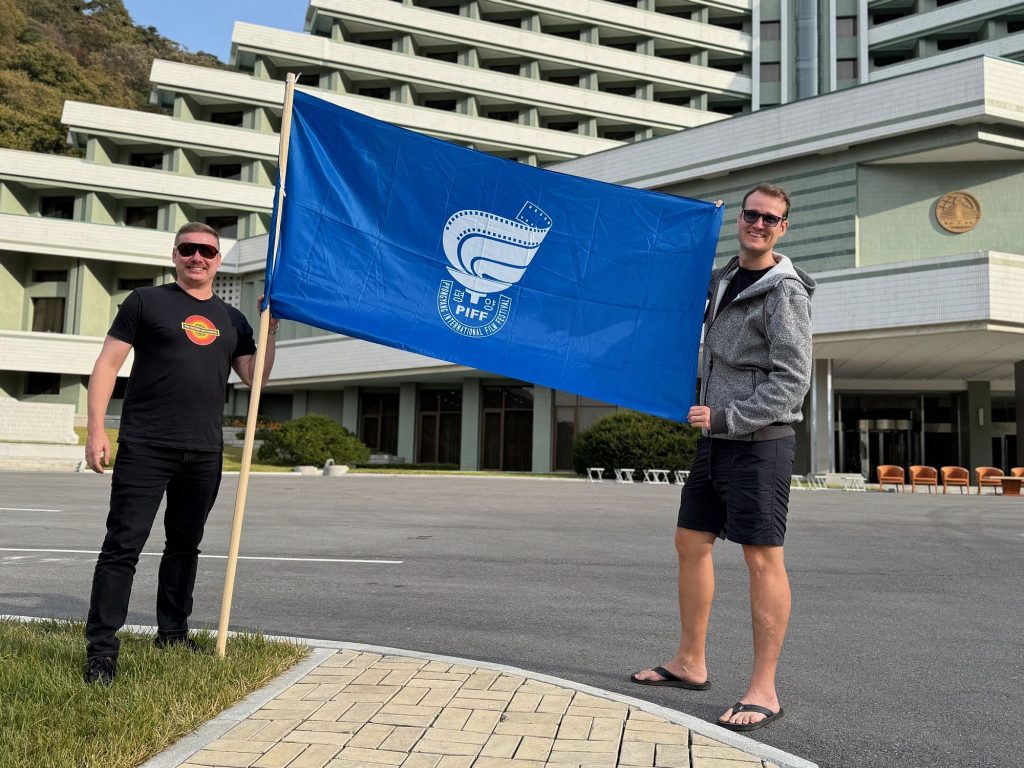
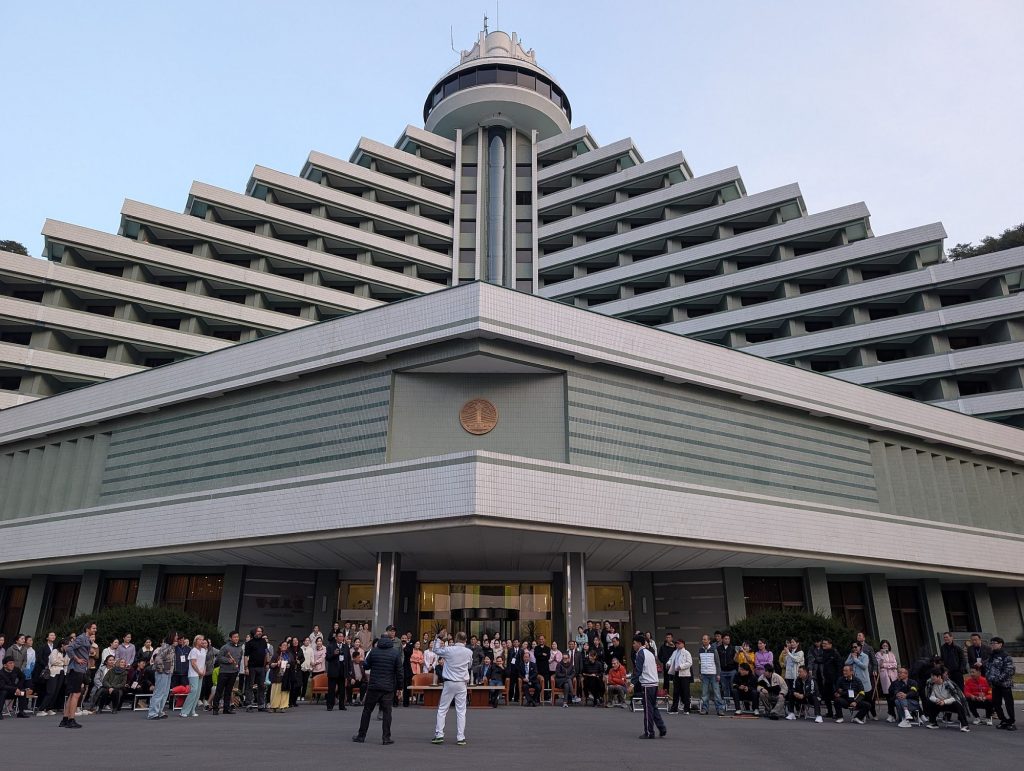
That evening, we checked into the Hyangsan Hotel, one of the finest hotels in the country. It’s rated five North Korean stars — which, by DPRK standards, actually means something quite impressive. The hotel features spacious rooms, grand architecture, a pristine swimming pool, and a relaxing sauna complex. It’s one of those rare properties in the country that feels like stepping into a luxurious time capsule of socialist design and 1980s grandeur.
Just outside the hotel grounds sits a small duck barbecue restaurant, famous among past travellers for serving what I still consider the best raw rainbow trout with chili sauce anywhere in the DPRK. It’s a surprisingly delicate and flavorful dish that pairs perfectly with an evening drink. On this trip, I also had the chance to try a newly released soju brand by Ryomyong, which turned out to be a particularly smooth drop, the perfect companion to cap off an unforgettable day in the mountains of Myohyang.
4. Exploring the New Hwasong District
Before visiting Pyongyang this year, I had seen countless photos and videos of the newly built Hwasong (Mars) District. I had followed its three construction phases with fascination, watching this once-empty area rise into one of the most ambitious urban projects in the country’s history. But being there in person was something entirely different. It finally brought home just how seriously Pyongyang is pursuing modernisation and how determined it is to project itself as a modern, forward-looking capital.
In North Korea, housing is state-provided and rent-free, assigned by the government according to one’s profession, social status, and family situation. Over the years, I’ve made friends in Pyongyang who were around my age, many of whom had married at the time, and were anxiously waiting for their chance to move into a new apartment. Back then, the waiting lists were long, and allocation could take years. Seeing Hwasong’s glittering skyline rise before me, with its 40,000 newly built apartments already occupied and another 10,000 currently under construction. I couldn’t help but wonder how many of my friends might now be living there, finally enjoying a home of their own.
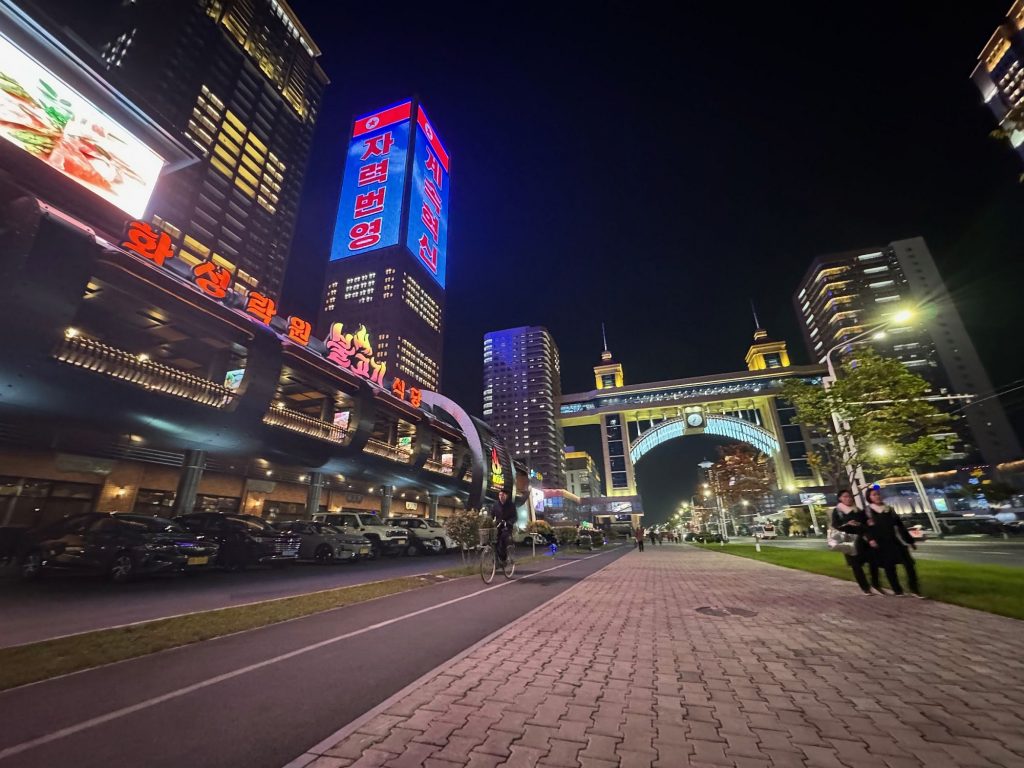
For anyone arriving in Pyongyang by air, Hwasong District is now the city’s grand new welcome mat. A showcase of sleek glass-and-steel apartment towers, manicured boulevards, and neatly arranged parks and plazas. The skyline is dominated by a cluster of tall residential buildings, the highest of which soars to 80 storeys, making it the forth tallest building in North Korea and one of the most striking features of the capital’s evolving landscape. These structures, painted in pastel tones and fitted with LED lighting, stand in dramatic contrast to the austere Stalinist-style architecture that once defined Pyongyang.
The lower levels of the apartment complexes are lined with cafés, restaurants, boutiques, car dealerships, and convenience stores. Small parks and playgrounds are interspersed between the towers, and at night, the entire area glows with carefully designed lighting displays. Shops and restaurants remain open surprisingly late, often until 10:00pm or even midnight, a reflection of a slowly evolving nightlife culture within Pyongyang.
During our delegation visit, Justin and I decided to break away from the group to see more of Hwasong on our own. With the help of our interpreters, who used a local taxi-hailing app, a North Korean Uber, we caught a taxi from the Yanggakdo International Hotel straight to Hwasong. Once dropped off, we had the district largely to ourselves. The streets were spotless, brightly lit, and impressively modern.
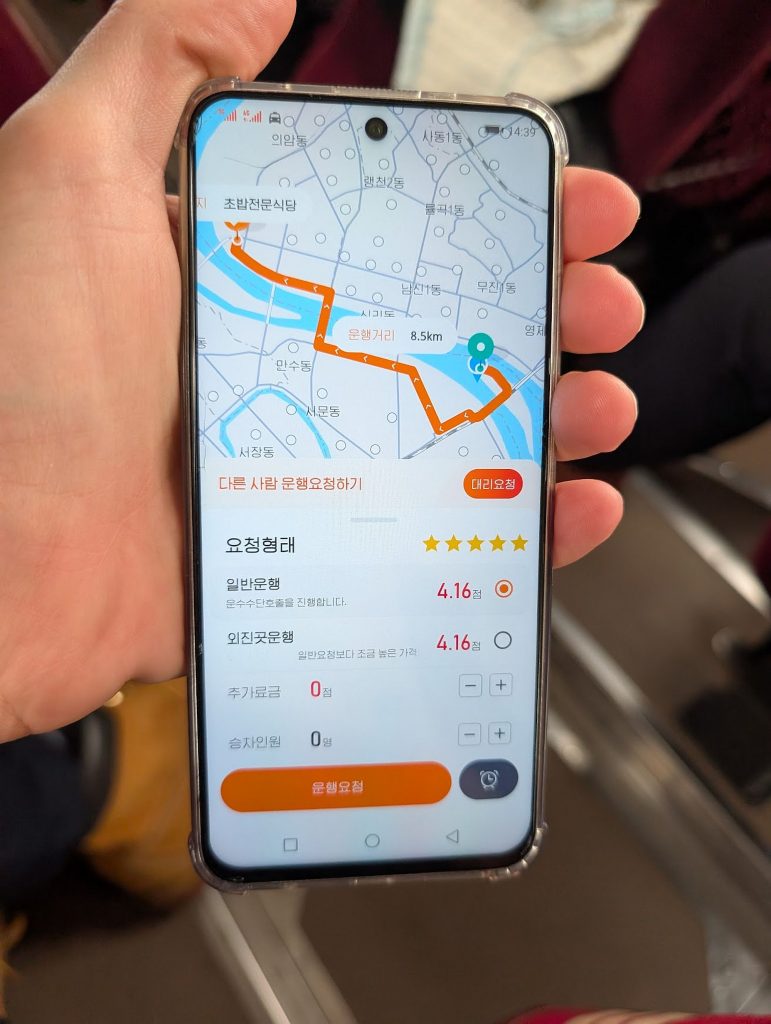
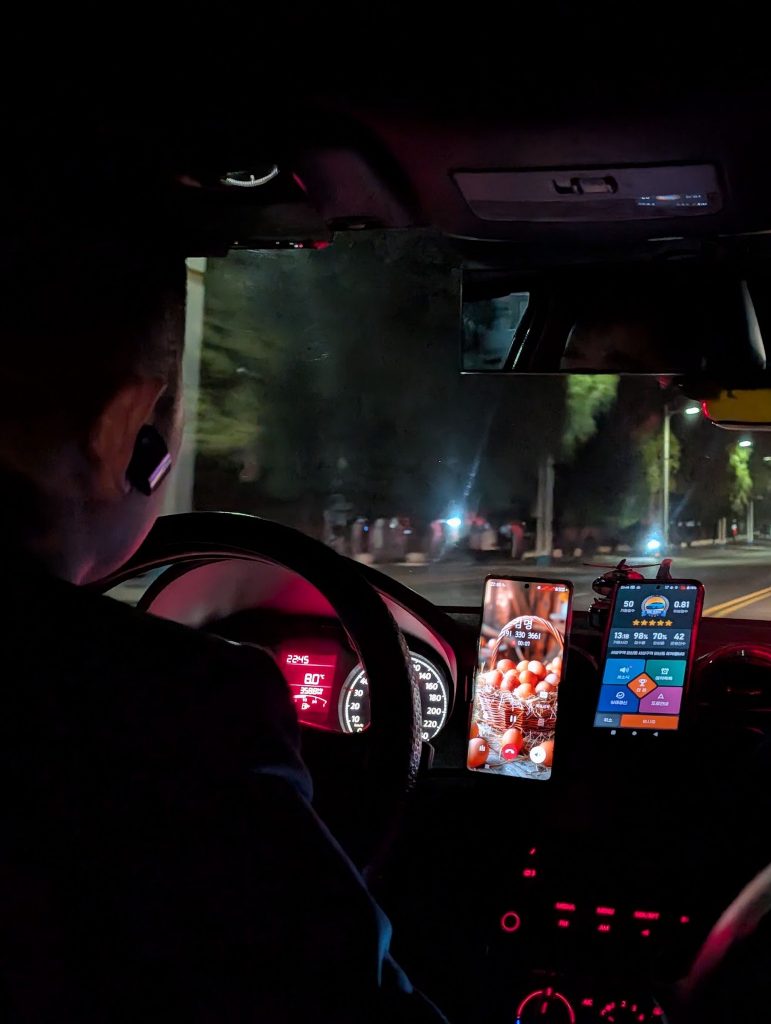
One evening, we made our way to the Taedonggang Beer Bar, now relocated from the Juche Tower to Hwasong District, and one of the few venues in Pyongyang that stays open past midnight. This place is something of a legend among locals and expats alike, a lively spot where the hum of conversation mixes with the clinking of glasses filled with freshly brewed Taedonggang beer.
The bar offers eight different draft beers on tap, each numbered rather than named, ranging from crisp lagers to darker, maltier brews. For the indecisive (like me), you can even order a beer flight with small sliders, giving you the chance to sample every one. The atmosphere has clearly taken inspiration from a German beer hall, with long wooden tables, and arched ceilings.
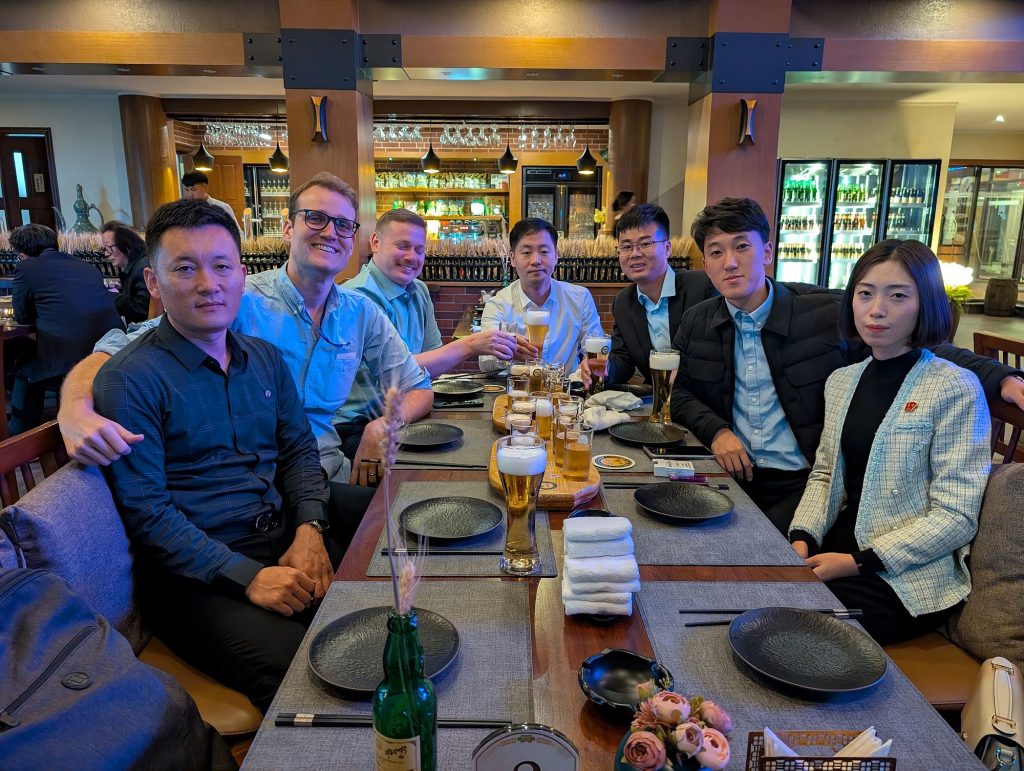
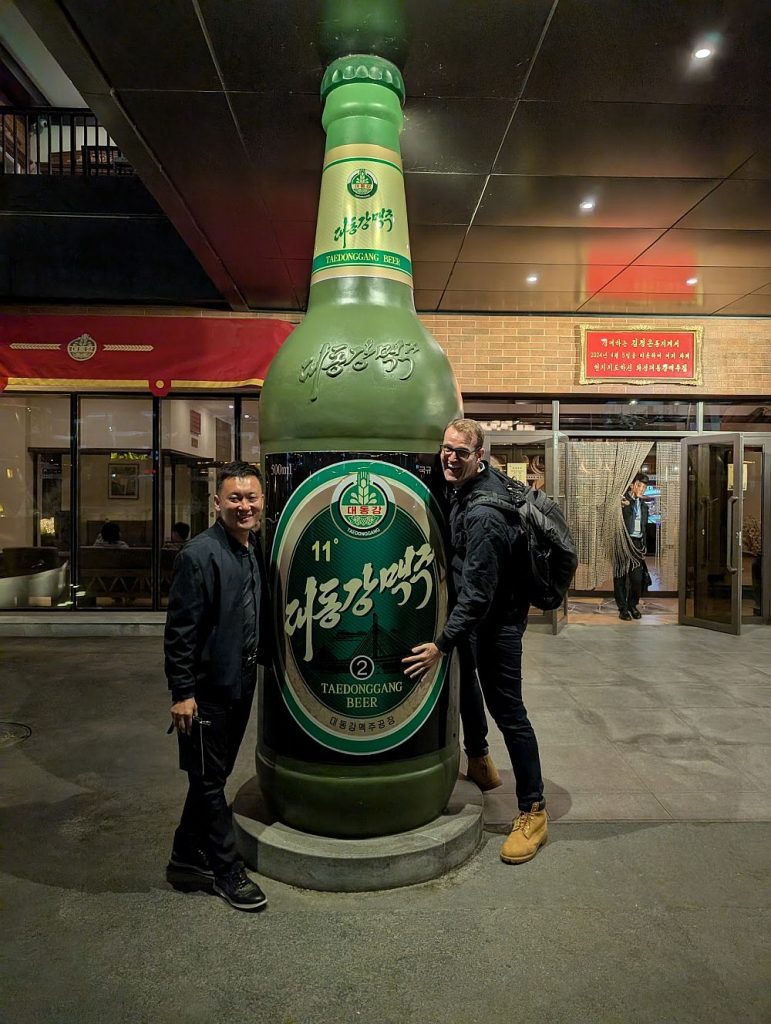
The staff were exceptionally friendly and efficient, darting between tables with trays full of frothy pints and sizzling food. The menu was equally impressive, German sausages, Korean bar snacks, kimchi, and, to my surprise and delight, Korean fried chicken. Yes, you read that right. North Korea has caught on to the K-Fried Chicken craze! Crispy, juicy, and perfectly seasoned, it paired beautifully with a cold glass of Taedonggang No. 2.
It’s these small moments, sitting in a North Korean bar, sharing fried chicken and local beer with friends – that remind you how unexpected and human Pyongyang can be.
On another evening we asked our interpreters to take us to the best restaurant in the city, and after some discussion, they mentioned a venue located on a sky bridge connecting two buildings on either side of a wide pedestrian promenade. The restaurant, they told us, was one of Pyongyang’s trendiest spots and required an advance reservation, something almost unheard of during previous visits to the country.
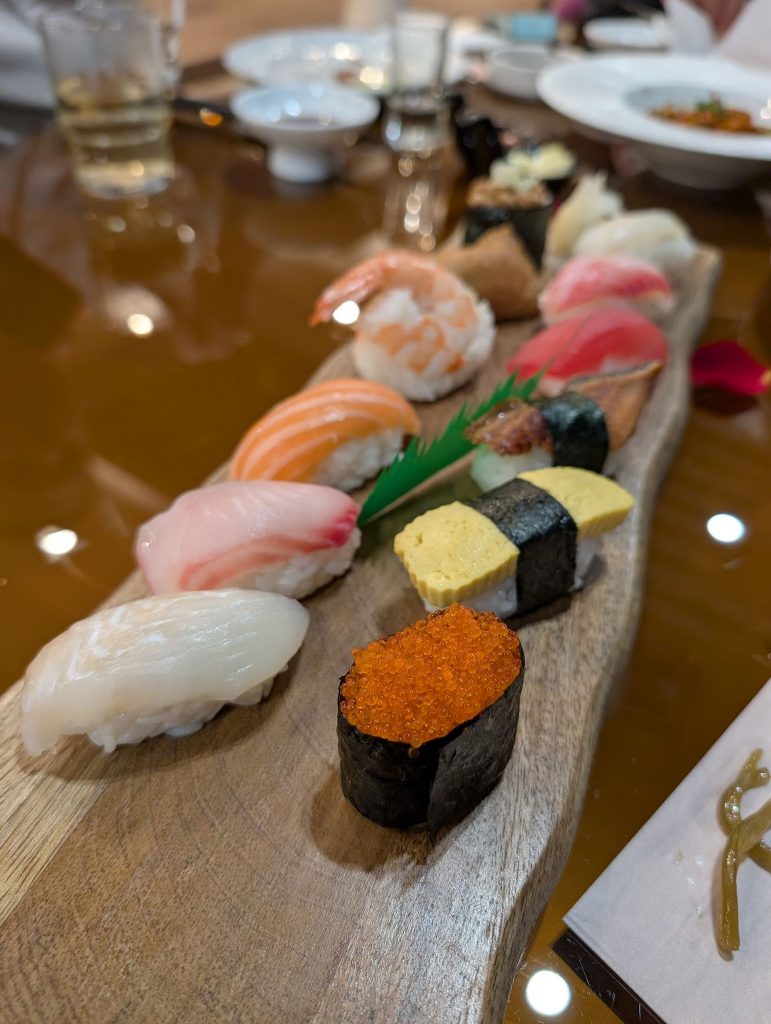
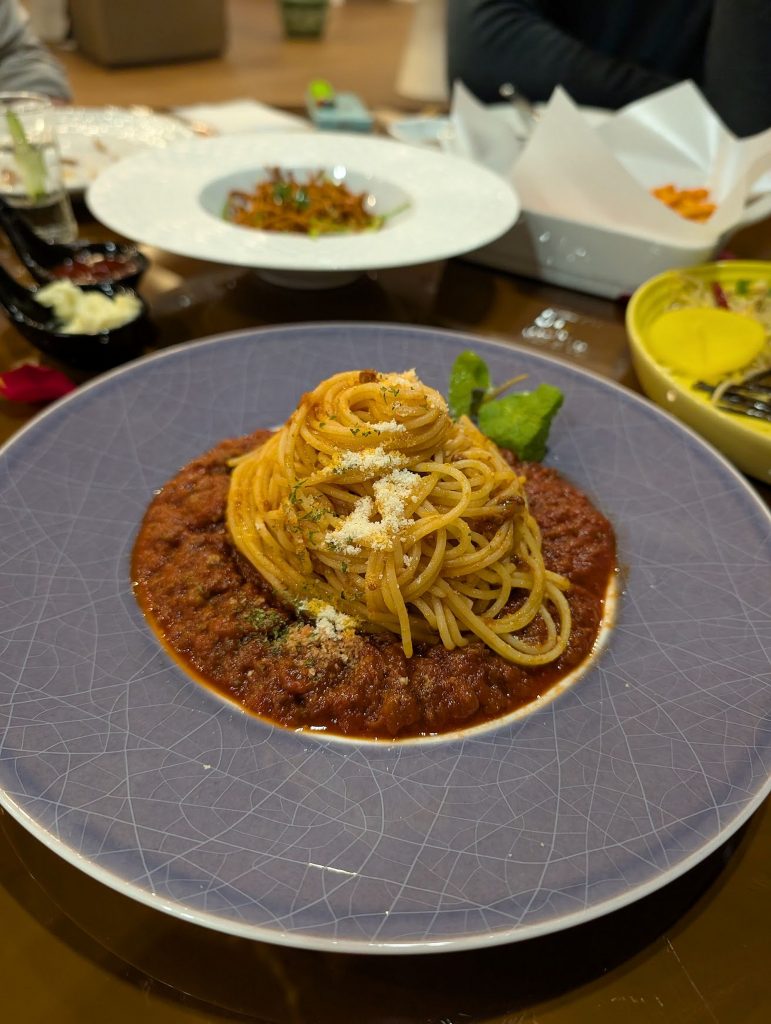
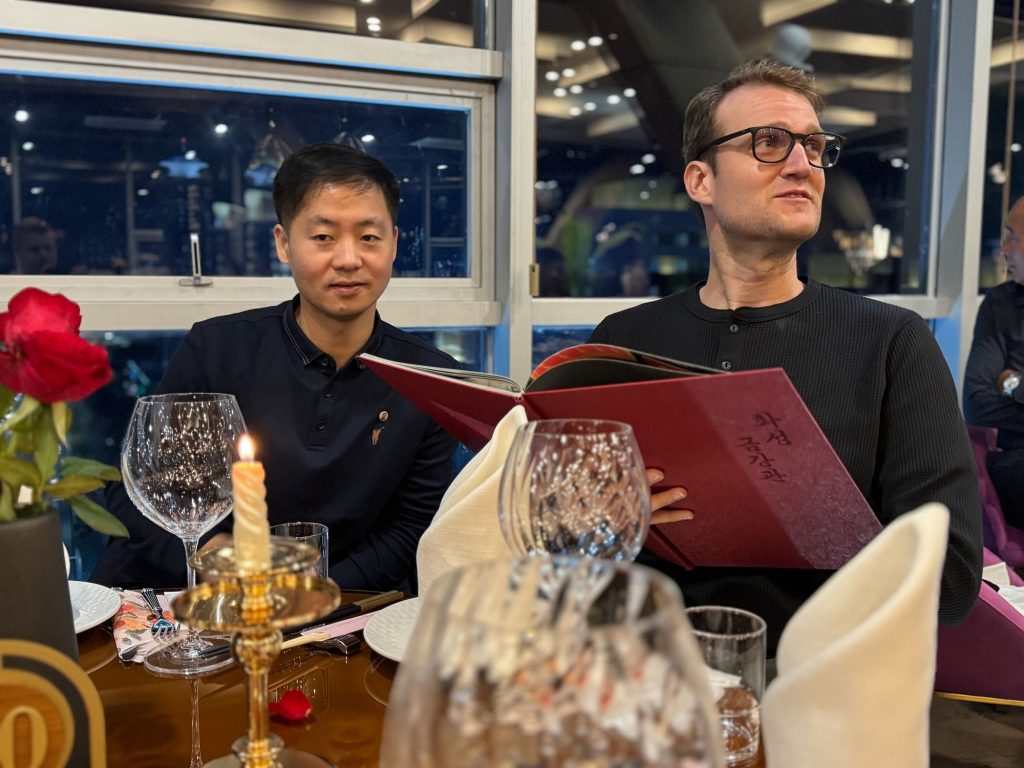
Walking inside, we were greeted by smiling staff and immediately struck by the glass walkway beneath our feet, giving us a clear view of the boulevard far below. The décor was elegant and international, a mix of Korean minimalism and modern cosmopolitan style. The menu surprised us even more: alongside traditional Korean fare, it featured Japanese sushi and Italian pasta and pizza dishes, all beautifully presented. We ordered a mix of everything, but the highlight was undeniably the sushi, which turned out to be some of the best I’ve had anywhere.. fresh, balanced, and shockingly affordable at just $10 to $15 per plate.
After dinner, we wandered further down the boulevard. We passed a car dealership showcasing electric vehicles, standard sedans, and even luxury cars such as Lexus models. Nearby, a cyber café buzzed with young locals playing online games, while small shops offered imported snacks, fashion accessories, and electronics. The entire area felt alive. Not the Pyongyang I first encountered in 2012, but something entirely new: a city boldly stepping into the modern era.
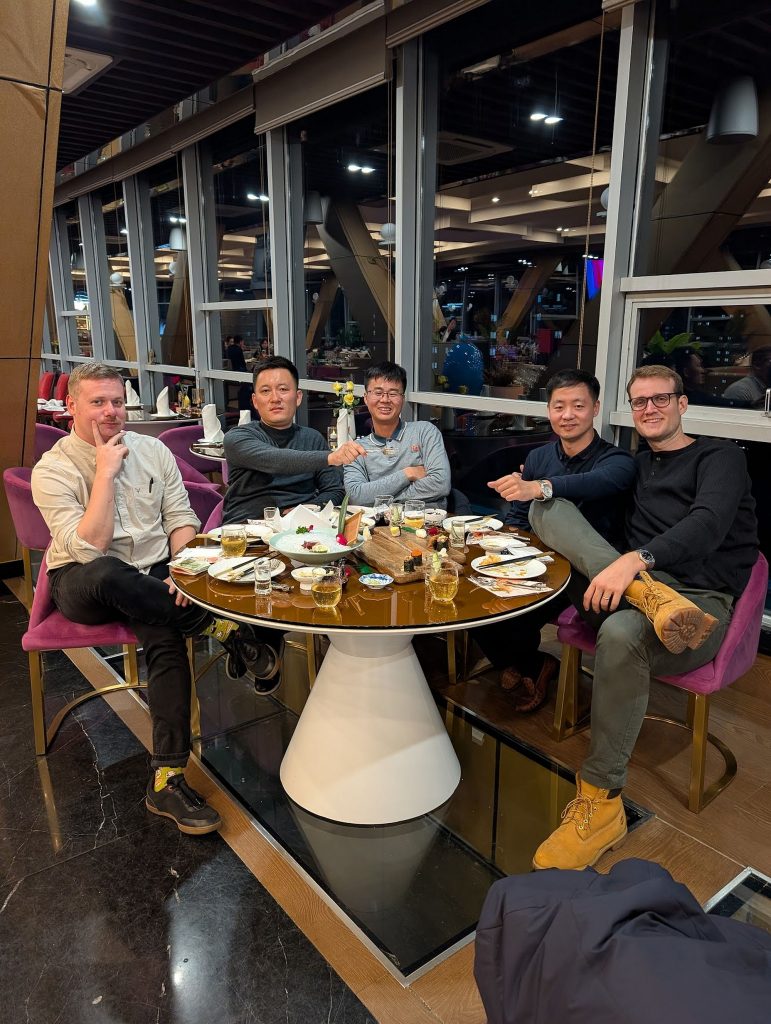
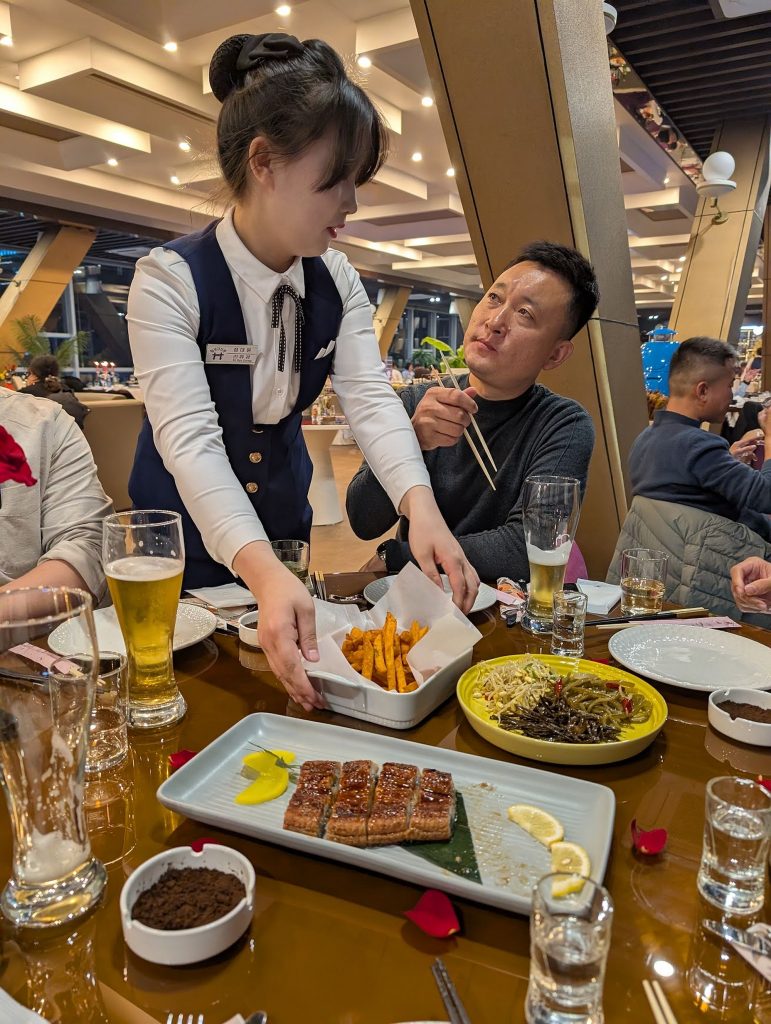
For our third evening, we couldn’t resist heading back to Hwasong District. This time to check out one of the new Korean BBQ restaurants that locals had been raving about. From the moment we stepped inside, we were greeted by the warm aroma of grilled meat. What immediately caught my attention, were the robot waiters gliding between tables, delivering dishes alongside their human comrades. A quirky but fascinating glimpse into North Korea’s push for modernisation and tech integration.
The menu offered an impressive selection of meats: duck, lamb, and beef, all locally sourced, as well as several imported cuts, including some proudly labelled as being from Australia. A nice surprise for me to see so far from home. Despite the temptation, we decided to keep it local, and it didn’t disappoint. The quality and tenderness of the meat were genuinely impressive, cooked perfectly over the charcoal grill in true Korean style.
The atmosphere was lively yet relaxed, with families, young couples, and small groups of friends enjoying their meals late into the evening.
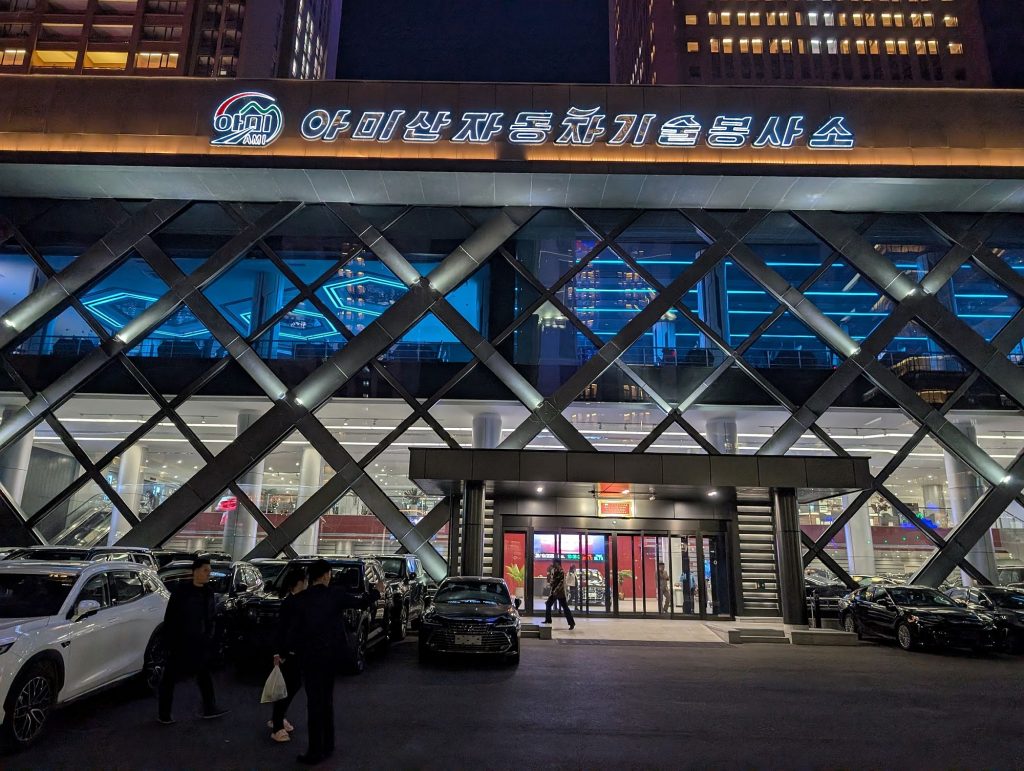
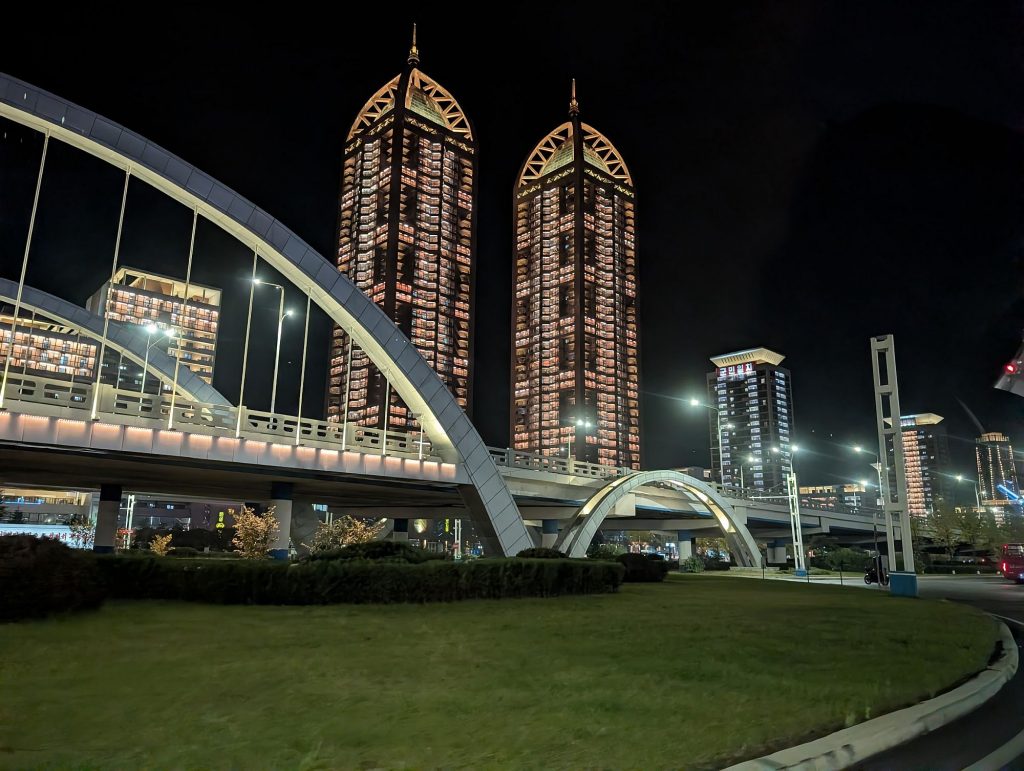
5. The Future of Tourism in North Korea
Of all the experiences and sites I’ve had the privilege of visiting in Pyongyang, from the new Hwasong District to the reopening of the International Friendship Exhibition, one thought kept crossing my mind: what will tourism look like when it finally returns to the DPRK?
There’s a sense of quiet anticipation in the air. According to what we’ve been hearing on the ground, the upcoming 9th Party Congress, expected to take place either later this year or early next year, may include tourism as a key discussion point, potentially raising it to the attention of the Marshal himself. If that happens, it could mark the first real step toward reopening the country’s borders to foreign visitors, something many of us have been waiting years to see.
Personally, I truly believe that the return of tourism to North Korea isn’t just about travel. It’s about rebuilding people-to-people connections and reviving a valuable avenue for cultural exchange and engagement. Every visit, every shared meal, every conversation contributes to mutual understanding, something the world could use more of right now. There are far more benefits than drawbacks in allowing such exchanges to resume.
Until that day arrives, Young Pioneer Tours remains in close contact with our Korean partners, maintaining our relationships and keeping the lines of communication open. The moment we receive the green light, we’ll be ready to once again bring pioneers from around the world to experience this truly unique destination firsthand.
If you’d like to be among the first to know when tourism to the DPRK reopens, reach out and get on our notification list. Because when the borders open, it’ll be a momentous occasion we’re proud to share with you.



